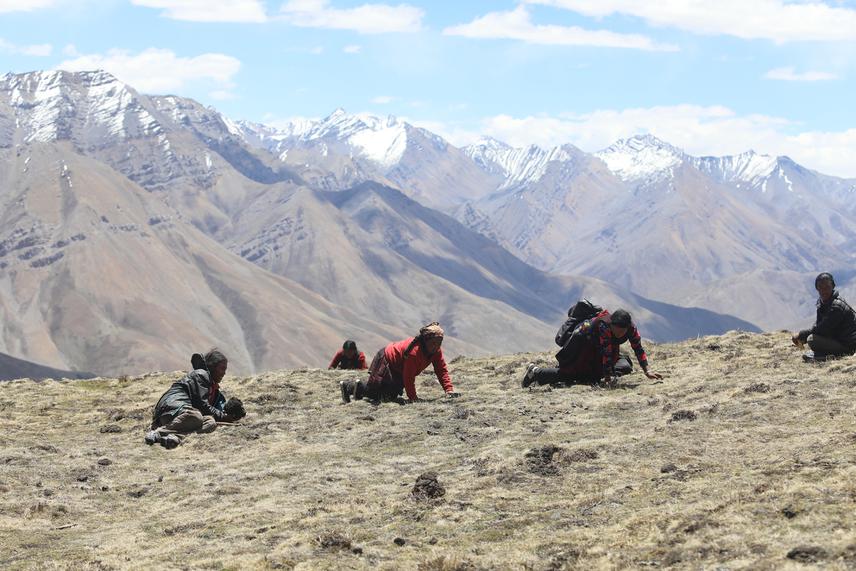Suraj Upadhaya
Other projects
4 Jul 2016
Sustaining Ophiocordyceps sinensis and Community's Livelihoods: Understanding the Economic & Ecological Impacts of Cordyceps Harvesting in High Mountain, Nepal
19 Nov 2019
Cordyceps, Mountains, Market, and People: Understanding Challenges in Conservation and Sustainable Trade of Cordyceps in Nepal
The communities of Dolpa and other Himalayan regions rely on natural resources, such as Opiocordyceps sinensis (Cordyceps), to meet their livelihood needs. However, overharvesting of Cordyceps has resulted in unsustainable practices, pushing this endemic species to the brink of extinction and has significantly impacted the habitats of other endangered species, such as the snow leopard, Tibetan wolf, and musk deer, in high-altitude ecosystems. My previous RSG project revealed that local communities in the Dolpa regions rely on collecting Cordyceps as a source of livelihood and an adaptation strategy, given that their agricultural activities have already been disrupted by climate change. Shrinking Cordyceps' habitat in the future will be another blow for this vulnerable group. The loss of biodiversity in the Himalayas can have cascading effects on the entire ecosystem, leading to the loss of ecosystem services and ultimately affecting the livelihoods of local communities.

Local harvesting cordyceps in high altitude Dolpa. © Bharat Bandhu.
Cordyceps' use constitutes one demand, while the conservation objectives to protect these resources and other species in the region create another demand. The conflict between conservation and livelihoods arises due to the competing demands created by the need to protect Cordyceps and other species in the region while also meeting the livelihood needs of local communities. On the one hand, overexploitation and unsustainable harvesting practices of Cordyceps can lead to biodiversity loss and negatively impact the long-term survival of species and ecosystems. On the other hand, the reliance of local communities on Cordyceps harvesting for their livelihoods creates economic and social pressures to continue harvesting, further exacerbating the conflict. The management of this valuable commodity exemplifies the wicked problems of sustainable natural resource management. Addressing the knowledge gap surrounding the conflict between conservation and livelihoods, particularly in the Himalayan region, is crucial for developing sustainable management strategies. Strategies that balance conservation and livelihoods can alleviate poverty and reduce the vulnerability of communities to environmental and economic shocks. This project aims to fill this knowledge gap about the conflict between the conservation of biodiversity and the livelihoods of people in the Himalayas.
The specific research questions for this project are:
• What are the implications of Cordyceps harvesting levels on other ecosystem changes in the Dolpa region?
• How do local communities and stakeholders perceive the conflict between Cordyceps harvesting for livelihoods and biodiversity conservation in the Himalayas?
The study will analyse stakeholders' viewpoints across Cordyceps supply chains to explore the intensity, magnitude, and causes of conflicts between livelihoods and conservation. It will use a multilevel modelling approach to identify factors influencing people's decision-making regarding livelihood strategies and their perceptions of conservation. The findings will inform conservation policies and strategies that maintain ecological and economic integrity in high-altitude ecosystems while supporting the livelihoods of local communities.